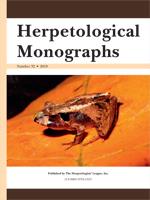We studied female Gopherus morafkai reproduction for 10 yr to evaluate reproductive variation and environmental factors that influenced reproduction. In contrast to vitellogenesis in other Gopherus, substantial follicle growth occurred during the spring after emergence from hibernation. Vitellogenesis and egg production varied considerably among individuals. The smallest egg-producing female had a carapace length of 220 mm, and no female produced more than one clutch per year. Compared to small females, large females were more likely to reproduce in a given year and produced larger eggs, but body size did not affect clutch size. Good maternal body condition contributed to follicle growth in winter, larger clutches, and larger eggs in a clutch. Females that emerged from hibernation earlier were more likely to produce eggs. Early-emerging females also produced larger eggs than did females that emerged later. These reproductive traits contribute to a life history that resembles an income breeder compared to the more capital-breeding strategy of the closely related Mojave Desert Tortoise (Gopherus agassizii). These life history differences might convey different reproductive and population consequences of climate change.
How to translate text using browser tools
8 October 2018
Reproductive Ecology and Life History of Female Sonoran Desert Tortoises (Gopherus morafkai)
Roy C. Averill-Murray,
Terry E. Christopher,
Brian T. Henen
ACCESS THE FULL ARTICLE

Herpetological Monographs
Vol. 32 • No. 1
December 2018
Vol. 32 • No. 1
December 2018
egg production
Gopherus agassizii
Mojave Desert Tortoises
reproduction
Reptilia
Testudines
Testudinidae




